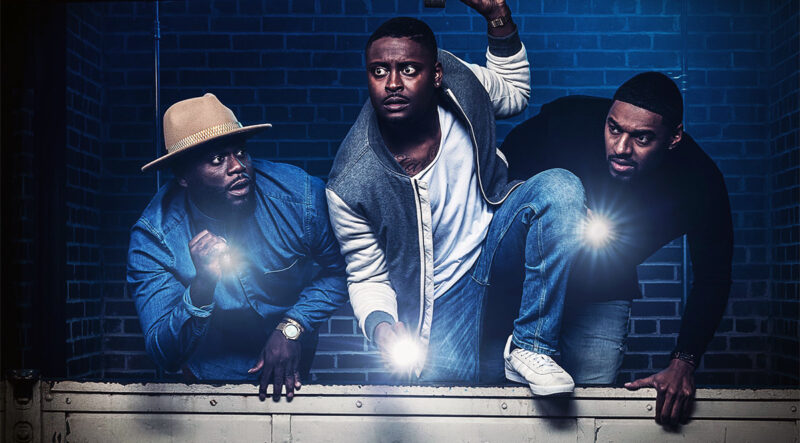The paranormal field has not only created divisivenesses based on an individual’s beliefs or interests but it has sadly been underrepresented in the media in terms of diversity.
“Ghost Brothers” was one of the only — and still is to this date except for “Fact or Faked: Paranormal Files” where Lanisha Cole was part of the show’s main crew. The only show featuring African-American hosts helping African-Americans but also White American Families.
This not only reflects the disparity of African-American hosts on paranormal shows, but also the lack of insight offered to audiences interested in how the paranormal affects other cultures.
The paranormal has always been a subject shrouded in mystery.
From its introduction into literature with novels such as The Legend of Sleepy Hollow by Washington Irving in 1820, The Turn of the Screw by Henry James in 1898 and Shakespeare’s Hamlet in 1599 to its pervasiveness within the Spiritualist Movement in the 1850s, the subject has always been one to trigger curiosity and fear.
But, we know that the concept of the ghost itself is a notion with a worldwide application.
Researching the term spirit in the African setting, we discover the concept of Amadlozi, which are spiritual figures for the Nguni people. It is said they offer assistance and protection, but also guide people toward a life of purpose and integrity — so a positive outlook.
The other spirit found is called Tokoloshe and is both evil and mischievous. It can be summoned to scare children, cause sickness or death.
Egyptian mythology had an incredibly developed list of supernatural beings in connection with the gods during the reign of pharaohs. Osiris was God of the Underworld. Isis, the wife of Osiris, was concerned with the rites for the dead.
Anubis was the principal God of the Dead. He was in charge of the funerary practices and the care of the dead before Osiris rose to that role. Ammit, a devourer of the dead, was a supernatural entity considered not only a demoness but also a goddess. She lived in the Underworld as a funerary deity. Apophis, or Apep, was a giant snake living in the Underworld and devoured souls, so the dead needed protection from him.
The Egyptian Book of the Dead is known as a list of funerary texts and spells supposed to guide the dead through their journey into the Underworld and the afterlife. However, despite these earlier traditions of beliefs in the Underworld, it seems that organized religion slowly distanced itself from these specific aspects of the ancient tradition.
Another aspect of the paranormal is the concept of Vodou. It originated in Haiti between the 16th and 19th Century as a blend of traditional religions from slaves taken from West and Central Africa.
Vodou developed and spread throughout the slave trade routes used by merchants, reaching Africa, Europe as well as the United States. It then evolved by embracing Catholicism and Freemasonry, as well as other elements of the French Colonialist’s way of life.
Vodou‘s concepts revolve around lwa spirits that would have been comparable to Roman Catholic Saints. Iwa is divided into groups: nanchons, all under the general creator Bondye. Lwa are venerated in a temple called ounfo by a oungan (priest) or mambo (priestess). Offerings in the form of fruits, liquor or sacrificed animals are made to the lwa for it to possess one of them and communicate with the rest of the audience. Even though Vodou suffers from a negative image and its practice has to be kept secret, Vodou is still a vibrant religion. It’s most prominent in the locations where descendants of the victims of the slave trade reside.
It is interesting to note in Haitian Vodou, many practitioners and believers also practise Catholicism as well. The combination of the two religions would seem at odds, but appear to provide a fuller spiritual experience.
Louisiana Voodoo is different from Haitian Vodou. It is based on the same West and Central African religions, Roman Catholicism and Haitian Vodou, but sacrifices are made for Blanc Dani, the Grand Zombi, and Papa Lébat.
Communication with spirits of the dead is done through the use of dance, summoning, drumming and the use of gris-gris or charms. Many Haitian migrants, fleeing the Haitian Revolution for a better life, ended up in Louisiana, bringing with them elements of Haitian Vodou, that over time were assimilated by Voodoo.
Although its practice was restricted by laws prohibiting gatherings; it still developed, slowly and spread throughout the Mississippi River basin. Even though its practice has declined, it remains an important cultural tradition.
With such rich culture, bathed in paranormal traditions, how did we get to where these traditions do not have any voice? In my opinion, this is a direct result of closed minds, narrowly constructed ways of thinking that cater to a mass audience. I know that I as a paranormal investigator would love to learn more about these subjects. I would love to see more shows such as “Ghost Brothers” that would focus on these elements and introduce the audience to another perspective. I would love to see paranormal movies that would explore these traditions but would not have a direct-to-video quality to them.
We still have a long path to walk, but I do believe we are on the right path.
Anton Buchberger, founder and lead investigator, Pandemonium Paranormal
Photo courtesy Destination America

